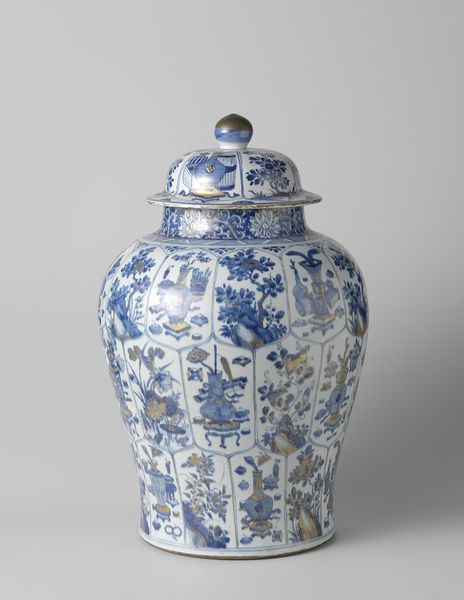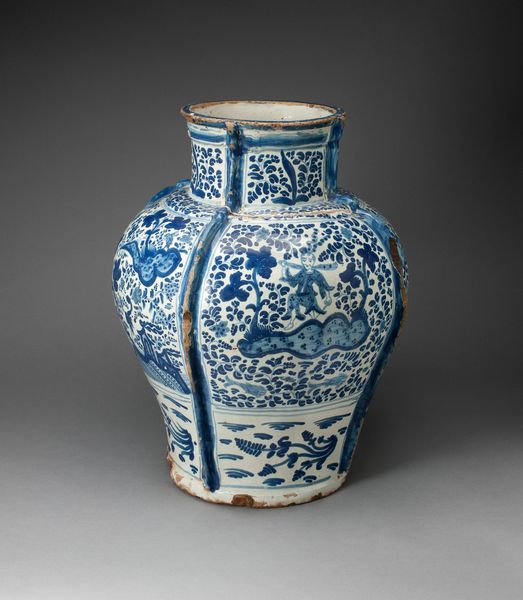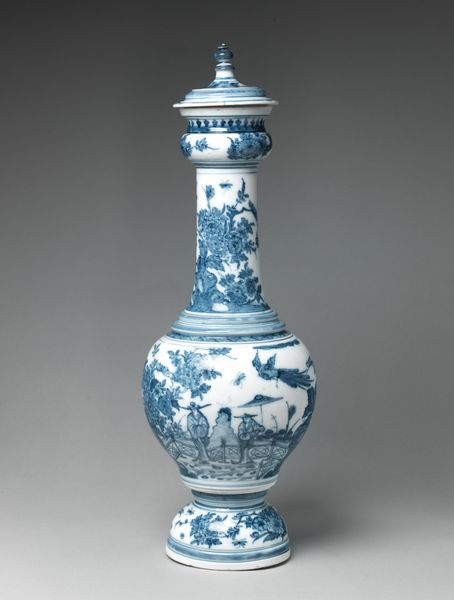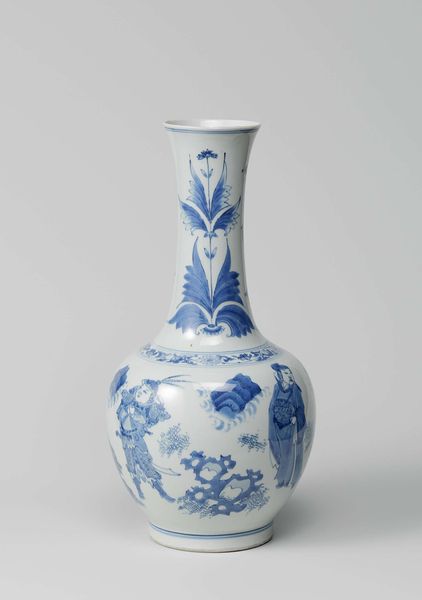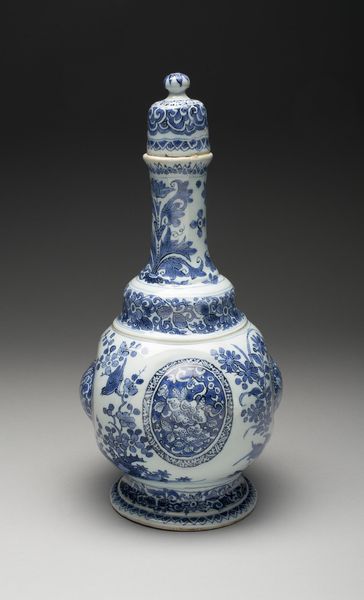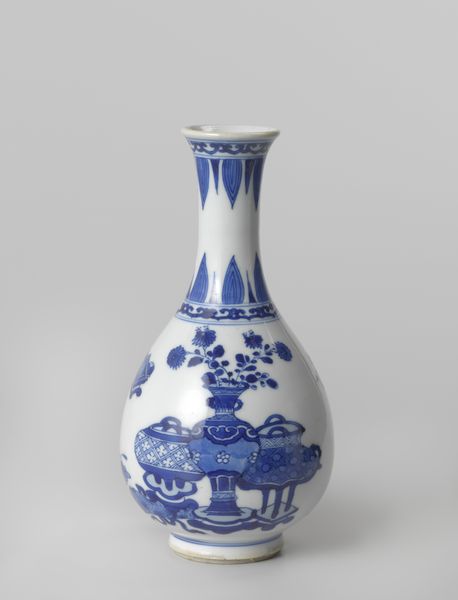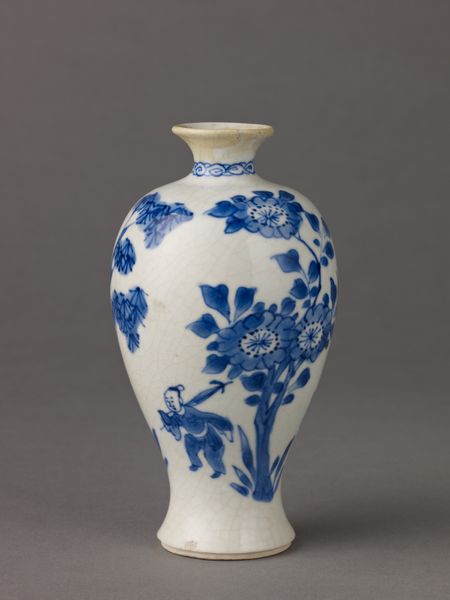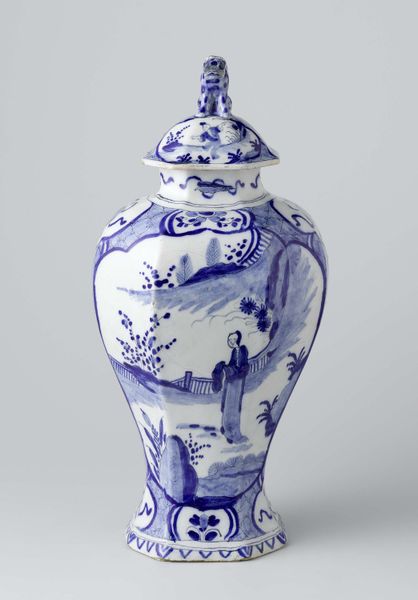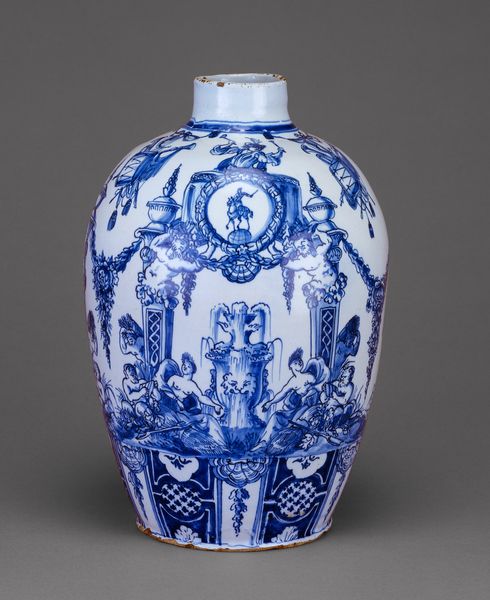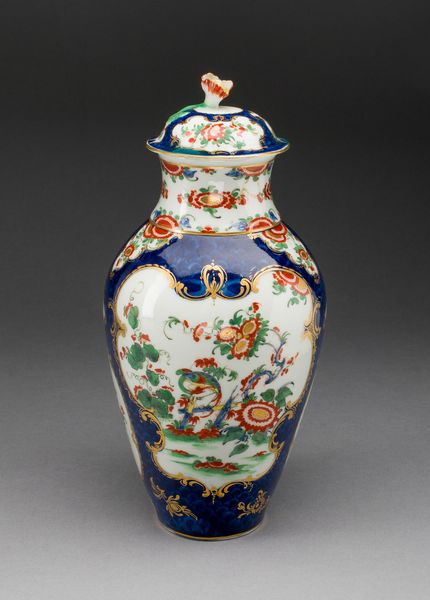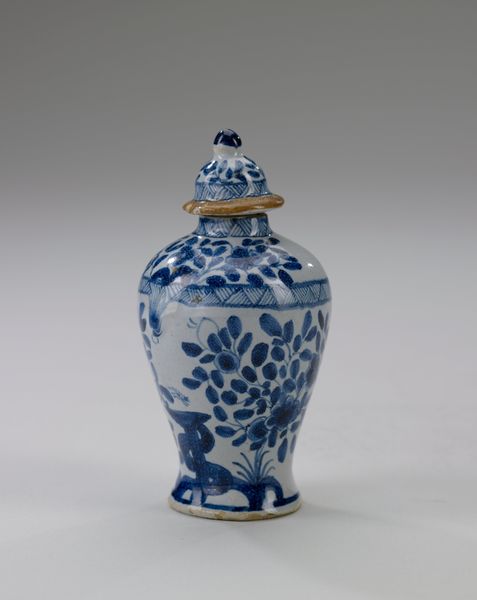
Dimensions: With cover: 8 3/4 in. (22.2 cm)
Copyright: Public Domain
Curator: Here we have a pair of covered vases crafted between 1764 and 1788 by De Porceleyne Bijl. These Dutch ceramics offer a glimpse into the decorative arts of the period, currently residing here at the Metropolitan Museum of Art. Editor: My initial impression is that the blue and white is surprisingly vibrant and delicate. The overall shape feels grounded, but those sculptural details on the lid introduce this playful, almost whimsical flourish. Curator: Indeed. Delftware like this enjoyed tremendous popularity, both domestically and internationally, as a status symbol, especially as an alternative to costly Chinese porcelain. Consider the socio-economic implications of accessible luxury and the rise of Dutch mercantile power. Editor: You can really see that striving for elegance. The cobalt decoration mimics Chinese styles, yet the landscape painting within those cartouches feels very grounded in Dutch artistic tradition. There’s a clear intention here for the ceramic forms to imitate metallicware, with sculptural relief imitating chasing, or applied castings. It really does show the mastery that can be expressed in the painted form and its material elements. Curator: The imagery itself is significant too, because the landscape vignettes would resonate with Dutch national identity during a period of political shifts, providing the Dutch bourgeoise opportunities for constructing their own identities. Owning landscape scenes such as these signified patriotism and refined taste. Editor: The application of washes with limited values also subtly shifts the perspective, drawing us to key objects in each vase’s design. The artist makes us engage deeply, though not in the same style of art from the period such as landscapes with peasants in rural areas. Curator: I agree. This "Covered vase" illustrates how consumerism and artistic expression became intertwined with Dutch social values. These porcelain pieces served a vital role as statements of belonging to particular societal stratums. Editor: For me, it's really striking how an object primarily intended for decorative purposes could also have such depth and detail upon closer observation. It is just incredible to have so much story-telling within one form and visual plane.
Comments
No comments
Be the first to comment and join the conversation on the ultimate creative platform.

